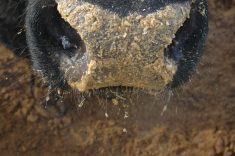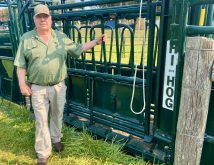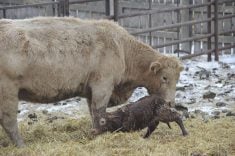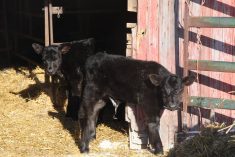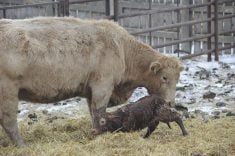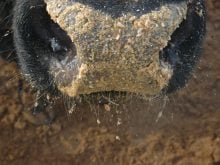It’s a tricky situation when calves lock at the hips during the birth process. If the calf is wide in the hips and the cow or heifer has a narrow pelvis, the calf’s hindquarters may be too wide to come through.
The right pulling technique is vital to a happy outcome.
“The problem many people run into is that they continue to pull straight back, especially when using a calf puller,” says Dr. Cec Ruschkowski, a mixed-practice veterinarian in Oyen, Alta.
“To pull a calf correctly, producers need to watch calves being born and see how the calf curves around in an arc as it comes out. And if the calf is a bit tight, some cows will stand up halfway through. The calf hangs there, but can start breathing and flops around, and soon pops on out.”
Read Also

Pork sector targets sustainability
Manitoba Pork has a new guiding document, entitled Building a Sustainable Future, outlining its sustainability goals for the years to come.
If pulling the calf, get its ribcage free of the birth canal before starting to pull downward, or its ribs may be hurt. Then, even if it gets temporarily stuck, it can start breathing.
“Once the calf’s chest is out, you can slack off on pulling, and most of the time this gives the cow a chance to push the calf’s hips up, and out he comes. So, patience at the right time is important to avoid the hip or stifle lock,” says Ruschkowski.
If the calf is still stuck, make sure the ribcage is completely out and ensure it is breathing. Then apply additional lubricant and force it in around the calf as far as possible by hand.
Pull the calf straight downward and between the cow’s hind legs if she is standing. This raises the calf’s hips higher in the pelvis to where the pelvic opening is widest.
“Even if the cow goes down, you can do a lot of wiggling and maneuvering of the calf,” says Ruschkowski.
If the cow is lying down, pull the calf toward her belly. It also helps to rotate the calf 45 to 90 degrees so its hips can more easily clear the cow’s pelvis.
Anticipation of potential problems is key. If a big calf and hip lock are likely, rotate the calf as soon as the head is out, Ruschkowski advises. Rotating the front of the calf starts to rotate its hips as well, so they can come through the cow’s pelvis on a diagonal.
The less time spent delivering the calf, the less trauma for both cow and calf. In cows with a long pelvis, prolonged nerve pressure during a lengthy birth can cause paralysis.
If a hard pull is imminent, it’s better to call a veterinarian and get a C-section.
“If you have tried to pull a calf that is too big to come through the cow’s pelvis, you are in a big mess and have probably already killed or damaged the calf and injured the cow,” says Ruschkowski.
“A good rule of thumb is that if you are not getting anywhere after 10 minutes of manipulating, you need to stop and call for help and do something different.”



